Meet the Famous Irish Warrior – Queen Maeve Irish Mythology
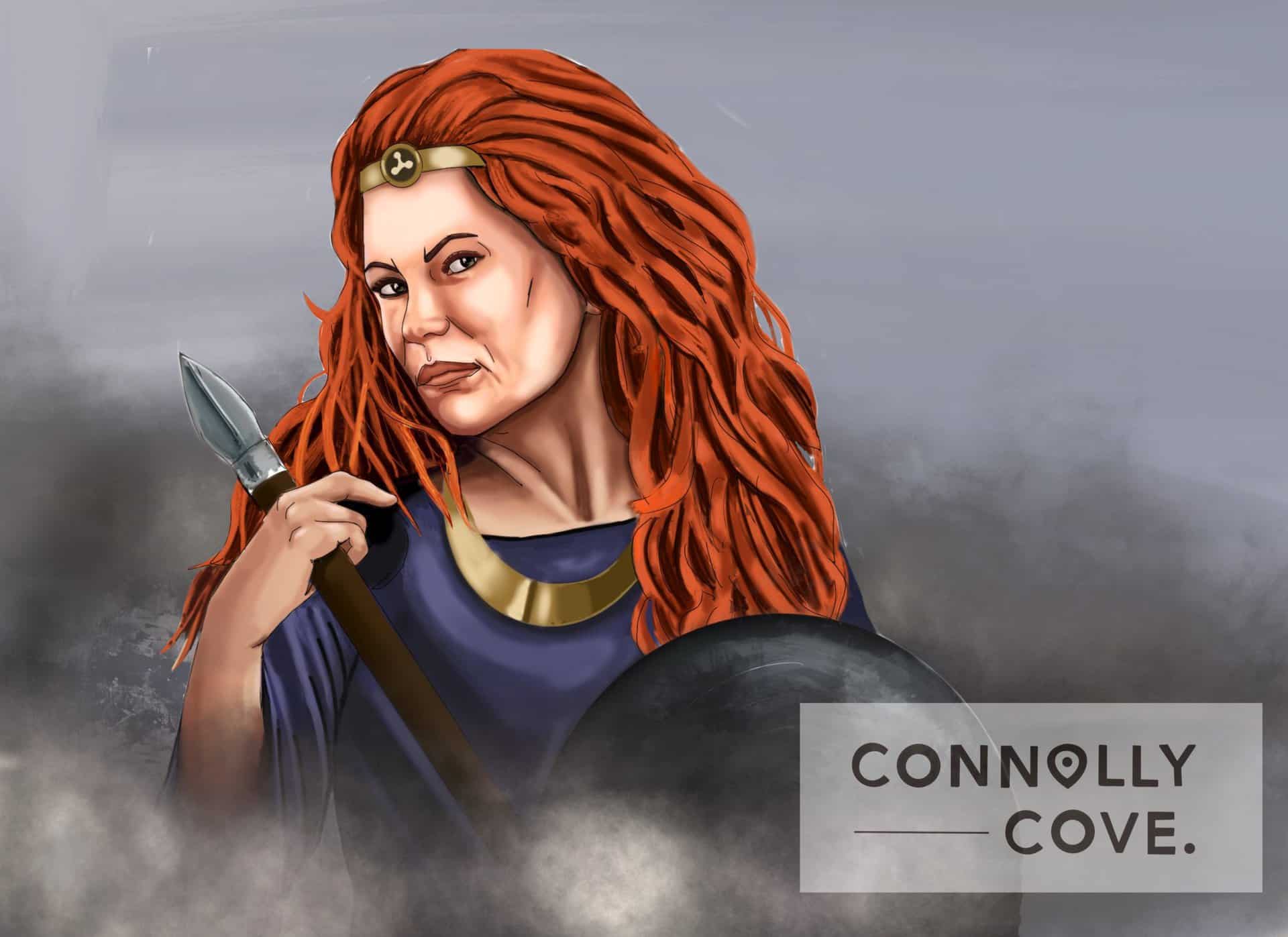
Updated On: April 24, 2024 by Ciaran Connolly
Cultures are founded on historical events, stories, and folklore. Before writing was widely practised, most of the world’s history was taught through word-of-mouth. This is how legends like Queen Maeve, the Irish Warrior Queen, were born.
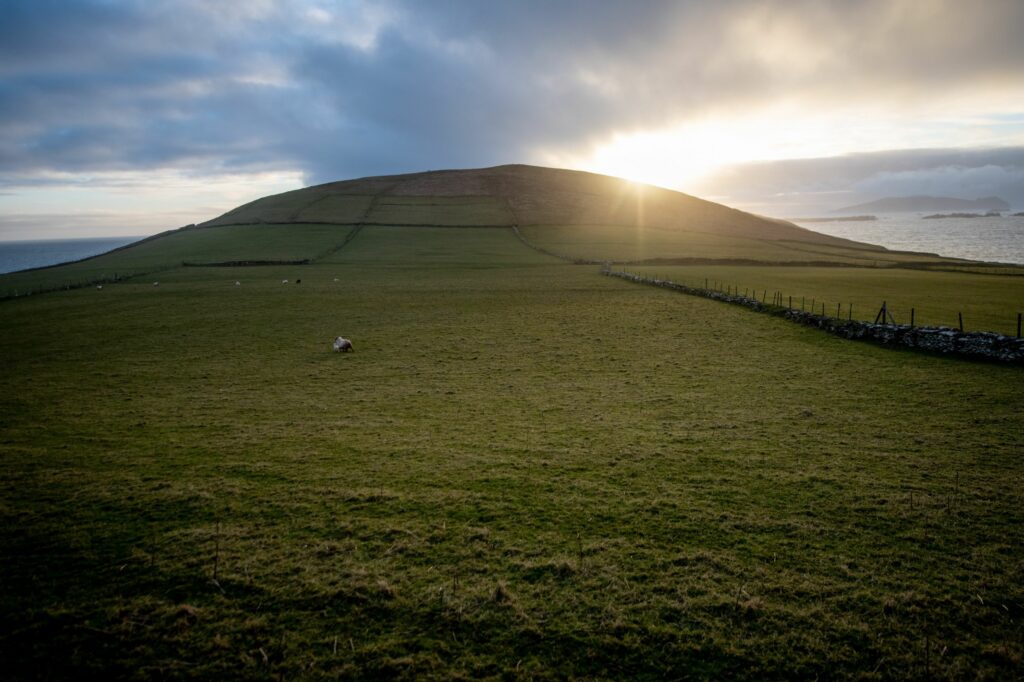
It could be said that some of the best storytellers come from Ireland, which used to be known as the land of Saints and Scholars, recording centuries of history dating back to the start of civilization. It is, therefore, no wonder that some myths have been passed down and preserved through generations.
In this article, we will explore the legends of Queen Maeve and her impact on Irish culture. Scroll down to read through the article, or click on one of the highlighted sections below to jump ahead!
Table of Contents
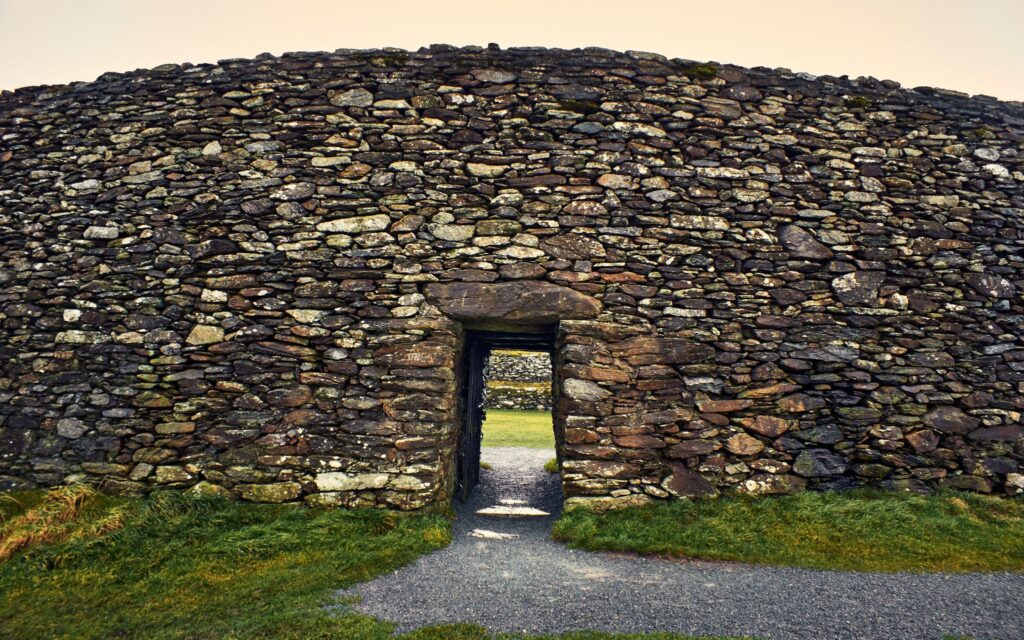
An Introduction to Irish Mythology
To better understand Irish mythology, it is beneficial to know that the folklore is divided into 4 significant stages, known as the four cycles of Irish mythology. Beginning with the Mythological Cycle, then the Ulster Cycle, the Fenian Cycle and lastly, the Historical Cycle.
With so many stories of varying degrees of fiction and fact, this is the easiest way to characterize everything concisely. For Queen Maeve of Ireland, the main topic of today’s article, her story occurs during the Ulster Cycle.
Etymology of the Name Medb
Did you know that Medb means ‘intoxicating’ and ‘she who rules’ in the Irish language? It is quite a fitting name for a Celtic Warrior Queen and supposed God of Land, Sovereignty and Intoxication!
‘Banríon’ is the Irish word for queen, and ‘Rígan’ is an older Celtic word for the same title. Banríon derives from two Irish words, ‘Bean’, meaning woman and ‘Rí’ meaning king.
The Early Life of Queen Medb, Ireland’s Royal Warrior
Medb was born into royalty. Her father was the king of Connacht before becoming the High King of Ireland. When this happened, Maeve became the ruler of Connacht. It is thought that Medb would have lived from 50 BC to 50 AD.
Maeve ruled for over 60 years, an extremely impressive stint compared to other leaders during her time. She had five known husbands throughout her life and was believed to have many children. Medb had at least one daughter called Finabair, who plays a pivotal role in some versions of the legendary Cattle Raid of Cooley, which we will discuss below.
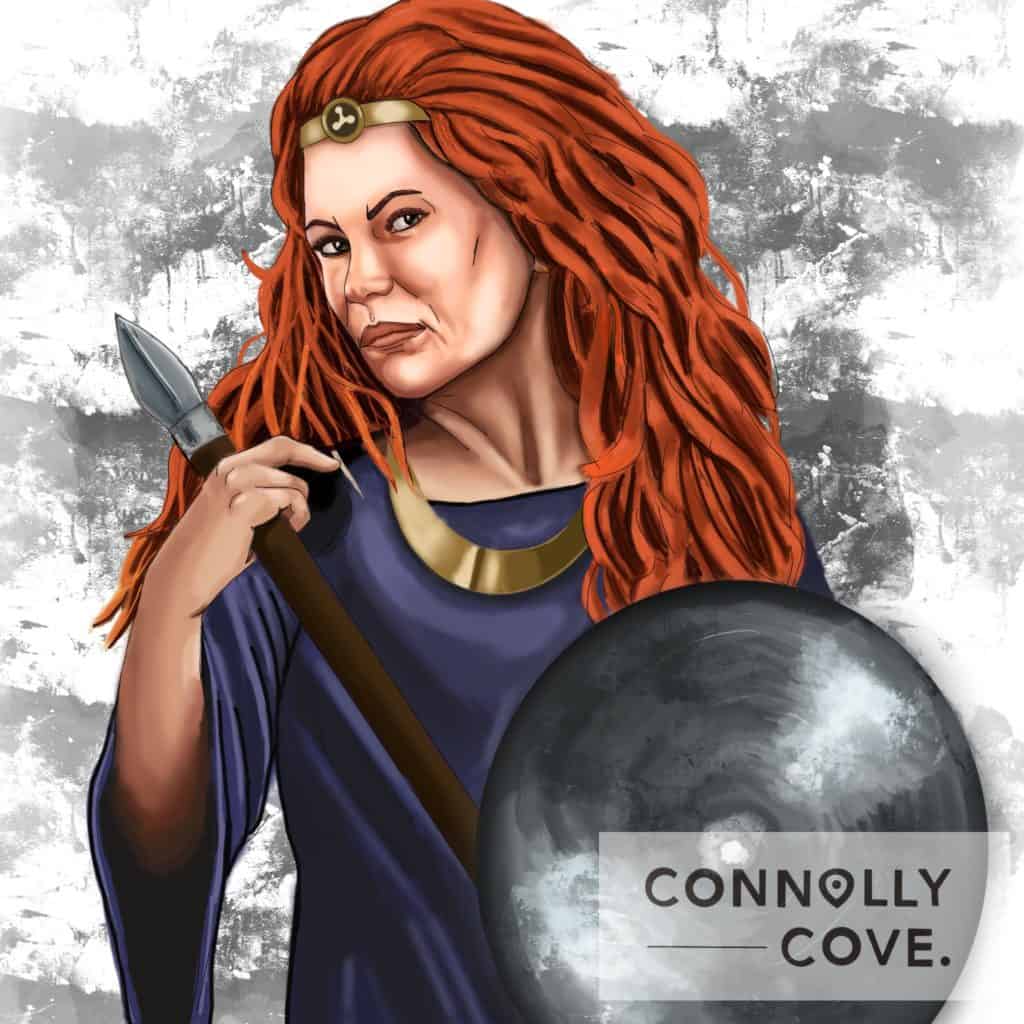
A druid foretold that one of her sons, Maine, would fulfil a prophecy to defeat her greatest enemy and former husband, King Conchobar. To ensure this prophecy would come true, Medb renamed all of her sons Maine.
A Prophecy Fulfilled
One of Medb’s sons, Cet mac Mágach, was given the nickname Maine Mórgor by his mother. Maine Mórgor translates to ‘of great duty‘. He was the one who fulfilled the prophecy by killing Conchobar many years later.
Conchobar appears in many famous stories in Irish mythology, including Deidre of the Sorrows, a famous Irish tale. Although we know of his unfortunate demise, he is an interesting character to learn about!
Queen Medb’s Relationships
During the life of Queen Medb, the Brehon laws of ancient Ireland existed. These laws recognised that men and women were equal; women could own property, lead armies, participate in the legal system, and pick their own partners. Marriage was seen as a contract, not a sacrament, and so separation was a commonplace idea.
As you may know, the Brehon laws date back to the 7th century, a long time after Medb is believed to have existed. So, how is this possible?
It is thought that this may have been chronologically misplaced by monks in early Christian Ireland. Monks were the first people to transcribe the folklore of ancient Ireland, but they often altered details to synchronise native traditions with biblical history.
Medb’s first marriage to Conchobar, the King of Ulster, was arranged by her father. He did this to appease the King, whose father he murdered. Medb demanded three things from all of her husbands: that they be fearless, kind, and without jealousy.
The third aspect of this requirement was often tested due to Maeve’s romances outside of her marriage. Maeve was open about her relationships, but sooner or later, the jealousy would be too much for her husbands.
Medb and Conchobar had a child together but separated afterwards. Still trying to gain the King’s favour, Medb’s father offered her sister Eithne to Conchobar. Medb was furious at this idea and killed her pregnant sister.
However, unbeknownst to Medb, the child survived and would later seek revenge.
After preventing her sister from marrying Conchobar, Medb began her reign over Connacht. She would then enter into a relationship with the previous king of Connacht, Tinni mac Conri. Their relationship ended when Conchobar killed Tinni in a single combat challenge after he had attacked Medb.
Queen Maeve of Connacht’s third husband, Eochaid Dála of the Fir Domnann, was a rival of Tinni for the Kingship of Connacht before Medb took over. This marriage ended when Eochaid discovered that Maeve was having an affair with her bodyguard, Aillill mac Máta.
Aillill mac Máta married Medb and became king of Connacht. He and Medb were two significant characters in the Cattle raid of Cooley. Many years later, Ailill finally became jealous of an affair Maeve had with a man named Fergus and had him killed.
Maeve later caught Ailill having an affair and ordered him to be killed, just like he had done to her extramarital partner.
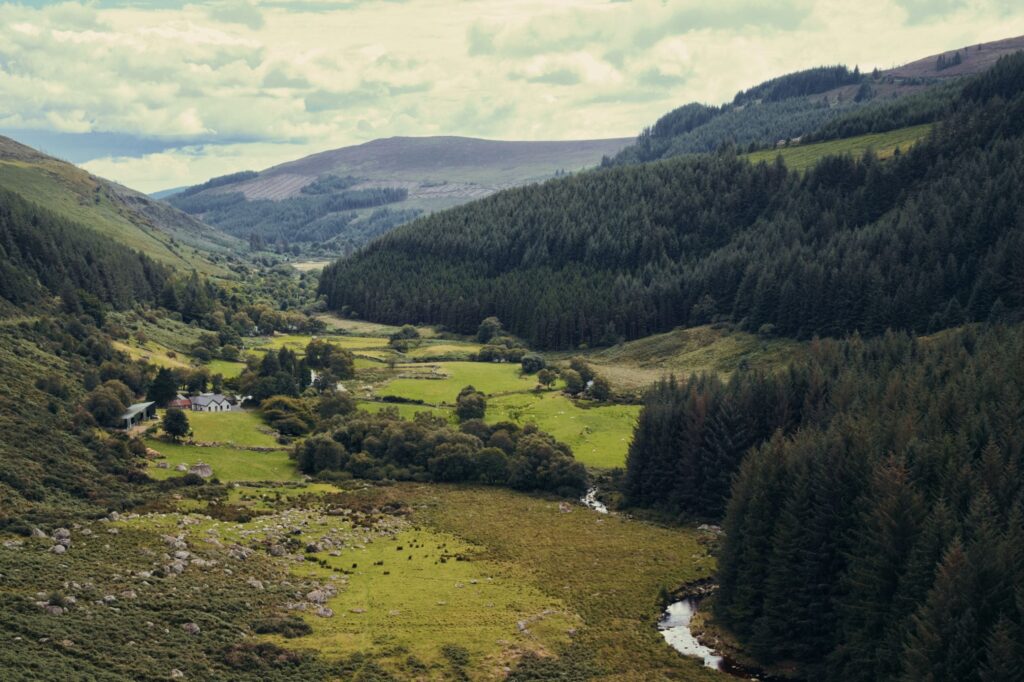
The Stories of Maeve, the Warrior Queen of Connacht
Historians to this day are not sure if Queen Maeve ever lived. However, the locations of the stories are real places. If Queen Maeve had lived, it’s believed it would have been around during 50 BCE.
The stories of Maeve lie in most of the early literature of Ireland. She is often described as a lively and energetic woman with many partners and husbands. Not only that, she was a strong female warrior with pride.
Queen Maeve’s journey begins in what is now known as Roscommon. The first writings of Queen Maeve were found in the Cave of Cruachan in Ogham writing. Ogham is an ancient Celtic alphabet.
The Cattle Raid of Cooley
When exploring the legend of the Cattle Raid of Cooley, it is essential to note that stories say that Queen Maeve was in search of a man to exceed her status and her power. She was a strong warrior queen; therefore, she wanted a man worthy of her.
Medb may have finally met her ideal man when along came King Ailill. They were married and ruled the Connacht area together for many years.
As the story goes, Maeve was in bed one evening with her husband, King Ailill. They were discussing who was more worthy or of higher importance. It was difficult for them to agree, as they came from the same power and were equally wealthy and gifted.
It wasn’t before long that the two decided to account for all of their belongings. The competition was close. However, King Ailill had something that was unmatchable: a white bull. Considering that Queen Maeve had no such thing, King Ailill won their little argument.
Only it wasn’t a “little” argument. It sparked a whole war.
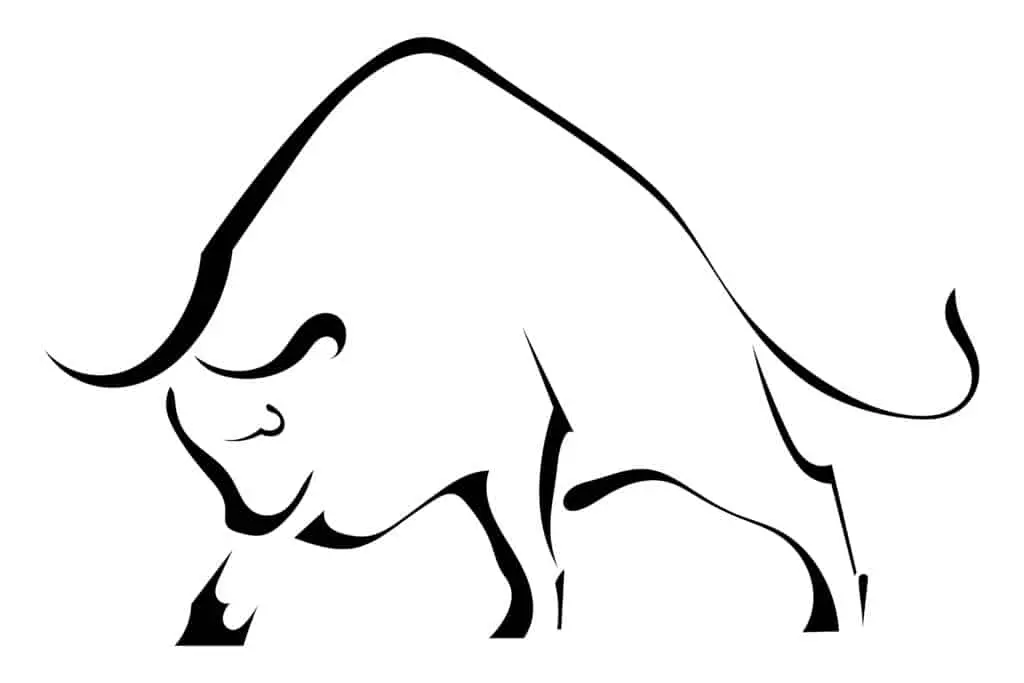
Finding the Bull
In order for Queen Maeve to measure up to King Ailill, she sent messengers all over Ireland in search of a competitor for the white bull. When a messenger stumbled upon a brown bull in Cooley that could rival Allills, Queen Maeve requested that the bull be given to her.
The bull’s owner, Dara of Cooley, initially agreed to part with the animal if he was compensated fairly. However, Dara overheard from one of Queen Maeve’s drunk messengers that the famous Queen Maeve would have taken the animal by force if necessary.
Enraged, Dara withdrew from the deal. This, in turn, incited the “Cattle Raid of Cooley”. Queen Maeve assembled an army from all her friends and allies in Ireland. She attempted to storm Cooley and kidnap the bull.
After multiple failed attempts to capture this bull, Medb’s army had suffered many losses. To prevent further casualties, Queen Maeve came to an agreement with the Cooley region, which was said to be proctored by Fergus MacRoich.
Fergus is an interesting character in Irish folklore. He was formerly the King of Ulster before Conchobar tricked him and took his throne. He and Medb shared a mutual hatred of the King and would become a couple in future myths.
The terms of the new agreement stated that there was to be one major battle between the best soldier of Queen Maeve’s army and a warrior of the Cooley region. However, Maeve had a trick up her sleeve. While the warriors fought each other, Maeve and her small army would travel north and finally capture the bull.
The Cooley warriors fell ill from a magical illness cast by the Celtic Goddess Macha, who wanted to help Medb seek her revenge on the King of Ulster. Macha also sought revenge, as Conchobar had forced her to turn into a horse and race while pregnant. Luckily for Medb, the King had many enemies.
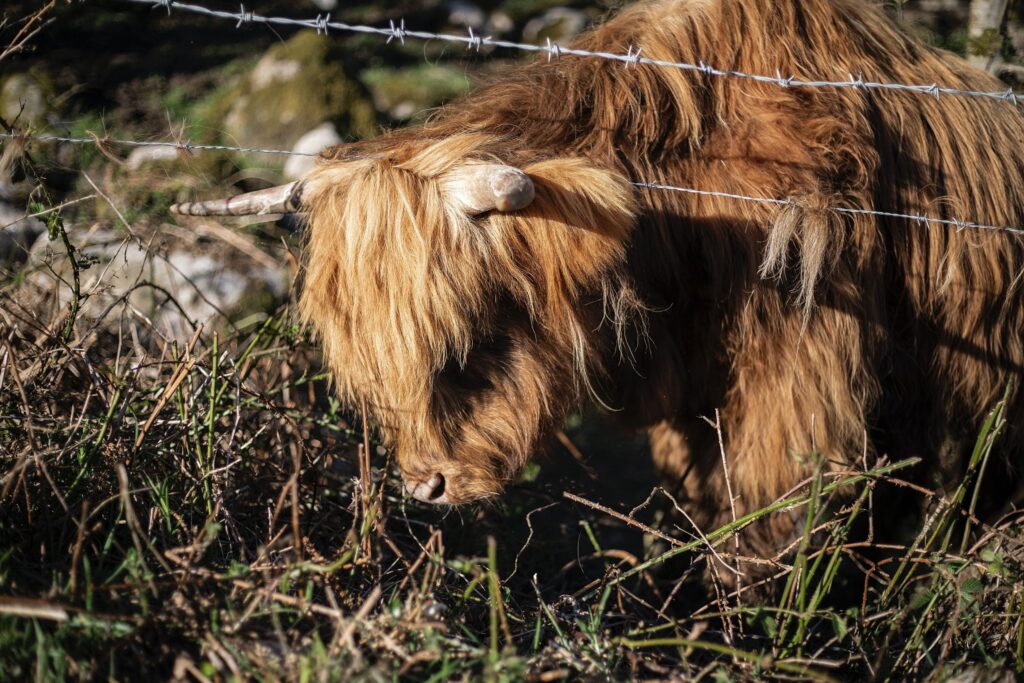
Medb’s daughter, Findabair, also features in part of this story. Her hand in marriage was offered to any soldier brave enough to fight Cú Chulainn one-on-one. His supernatural powers and strength could easily defeat a mortal man, so the only way to persuade the warriors to fight was to use Findabair’s beauty to manipulate them.
After selecting the best warrior, Maeve offered up the Champion of Connacht, Ferdia, to fight the legendary warrior from Cooley. Ferdia was Fergus’s son and the foster brother of Cú Chulainn.
The only person fit to fight in Ulster was Cú Chulainn; he was just a teenager at the time. Cú Chulainn had invoked his right to fight single combat, defeating the soldiers one by one until he was the last warrior standing.
The reason Cú Chulainn was able to fight was because the spell Macha cast affected all men. As he was only 17 and not yet considered an adult, he was not affected by the spell. An interesting image of a child standing alone against an entire army is created, and it is hard to know which side to root for.
Similar to Medb, Cú Chulainn was helped (and hindered) by the gods during the battle. The Morrigan, the sister of Macha and a member of the Tuatha de Danann, sabotaged him. Lugh Lamhfhada, or Lug, revealed himself to be the boy’s father and healed his life-threatening wounds.
The fight resulted in the death of Ferdia; however, he succeeded in distracting the opposing side long enough for Maeve to steal the brown bull.
In variations of the story, Ferdia’s wife is killed by Cú Chulainn, and Medb then offers her hand to him. Other legends tell tales of Findabair dying from shame after realising how many of her mother’s allies had given their lives for the chance to marry her.

After the Battle
After Queen Maeve captured the bull, she returned to her husband. In order to determine who’s bull was more valuable, the couple had the bulls fight one another. Unfortunately, this fight ended up killing both of the animals.
In the end, this is quite a comical amount of effort for such a lacklustre result. Both Queen Maeve and King Ailill were left without their prized possessions, which they both fought so hard to keep. With the amount of catastrophe and death surrounding this tale, the ending is somewhat underwhelming.
It is ironic and saddening that the ignorance of the couple caused so much grief and loss. While Queen Maeve won the Cattle Raid of Cooley, the death of both bulls meant neither the King nor Queen won their debate.
One lesson you can learn from this story is that there are no winners in war. Everyone in the story lost something, and previously healthy relationships between family, friends, and kingdoms were damaged beyond repair.
Do not mistake this story as the end of Queen Meabh. There are many stories about her sprinkled all over Ireland. Her passion, grit, determination, stubbornness, and beauty are not to be discounted either. Perhaps the best part of Irish Mythology is the variations and different perspectives you can find throughout the literature.
Another Version of the Cattle Raid of Cooley
Here is another variation on the legend of the Cattle Raid of Cooley. Scáthach plays a role in this version as the person who trained Cú Chulainn. Our article describes her life as a fierce female warrior who would train one of the most powerful heroes in Irish mythos.
Why not read our article about Scáthach after you finish this article?
As you can see in this story, the main elements of the Cattle Raid of Cooley remain the same, but the details are different. Which version do you prefer?
Queen Medb, a Gaelic Deity?
Some believe Queen Maeve to be a manifestation of the sovereignty goddess of the Tuatha de Danann. She is very similar to Medb Lethderg, the sovereignty goddess of Tara.
They are also linked with the Morrígan, the three sisters and Goddesses of War: Badbh, Macha and the Mórrigan. The names of the 3 sisters change quite often depending on which story you are reading, so it is possible that Macha, the Goddess of War and Sovereignty, is also an interpretation of Medb.
Medb or Macha is known as the Goddess of Sovereignty, the Land and Intoxication. Some theories state that Maeve is almost a reincarnation of the goddess in human form, but one of the joys of folklore is that it changes to suit the needs of a story. There is no definitive answer!
The three figures mentioned share common personalities and traits, such as being strong-willed, stubborn, and ambitious, as well as cunning and promiscuous. They are all seen as an archetypal warrior queen.
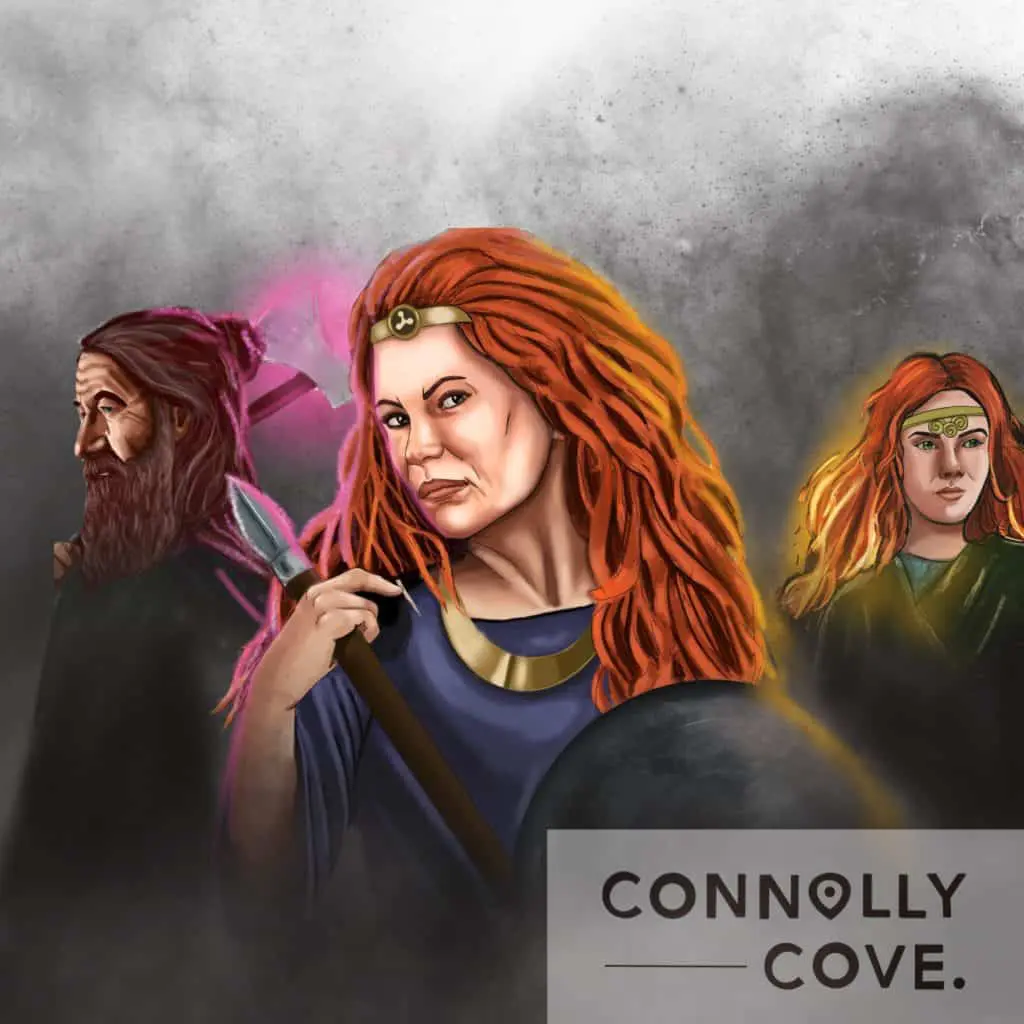
Some of the mystery surrounding Queen Maedbh is what makes her so interesting. Was she a real queen or a Sovereignty Goddess? Was she a benevolent leader or a harsh ruler? Queen Maeve is one of the most multi-dimensional characters in Irish mythology; her strengths and flaws make her fascinating.
Medb doesn’t fight for the greater good or embody evil; she simply seems to be someone who acts in her own self-interest, which creates many exciting moments. She is one of the earliest female characters in Irish mythology who is represented as independent and appears as the main protagonist in stories. She is the leader of the legends rather than a romantic interest or tragic figure for a male counterpart.
Real-Life Locations Named After Queen Maeve
The stories of Queen Maeve take place all across Ireland and feature real locations that you can visit today. Some of the most famous locations include:
- Konckmaa or Cnoc Méa (Maeve’s Hill) in Co. Galway
- Milleen Meva or Millín Mhéabha (Medb’s knoll) in County Roscommon
- Rath Maeve or Ráth Medb (Medbs success) near the Hill of Tara Co. Meath
In addition to these three, many other place names throughout Ireland refer to Queen Maeve!
We have an article about the meaning of all 32 county names and the 4 Provinces of Ireland, if this interests you!
Queen Medb’s Grave
The death of Queen Medb happened when Furbaide, son of Eithne and Maeve’s nephew, finally avenged his mother. After her death, Maine Athramail succeeded his mother and took the throne as the King of Connacht.
It is believed that Medb is buried in Miosgán Médhbh, a tall stone cairn on the summit of Knocknarea in County Sligo. The legend says that she is buried upright, facing her enemies with her spear in her hand, and ready to fight.
Other theories claim that the warrior queen is buried in her hometown of Rathcroghan, County Roscommon, at a long, low slab named Midguan Medb.
A Note on the Spelling of Maeve
Maeve has had many spelling variations over the years and throughout this article! Medb was the old Irish spelling of the name, which later became Meḋḃ or Meaḋḃ. As the Irish language evolved, it transformed into Meadhbh, Méibh, Meabh and Méabh.
Maeve, the most commonly seen spelling, is the anglicised version of the name. Each variation is pronounced the same way, ‘May-ve‘.
Queen Maeve in Modern Pop Culture
Queen Maeve makes a cameo appearance as a character in the Harry Potter universe. She appears as a famous witch on a chocolate frog card, a trading card that depicts the most famous witches and wizards in the fictional universe.
Her likeness also appears in historical pieces. A character called Queen Mab is a fairy referred to in William Shakespeare’s play Romeo and Juliet. The character may have been inspired by the Irish Queen Maeve.
Queen Maeve is a Fascinating Character in Irish Mythology!
Now that we have answered the question ‘Who is Queen Maeve?’, you may want to ask many more questions. However, it is essential to note that when it comes to Irish mythology, factual events have been passed down from person to person and have evolved into the folklore we know today.
There are numerous variations, from little details changed to significantly different endings. This is one of the results of writing stories down hundreds of years after they had initially been told, and quite honestly, it adds to the charm of Irish mythology.
The same story feels unique when told by different people. Some families may have passed down a version of the story from generation to generation, and in their eyes, the story they tell is the ‘real‘ version.
The differences aren’t significant in Irish folklore. What is really vital is keeping and continuing the tradition of storytelling for future generations to cherish.
The next time you visit your favourite ancient ruins or walk into an old castle resort, take the time to appreciate the history behind these magnificent buildings. The stories, myths, and legends will not disappoint you, as Ireland is filled with mythical and magical tales.
If Celtic Queen Maeve and the folklore of Ireland interest you, you can read more about her and other Irish legends in our list of Irish Kings and Queens.


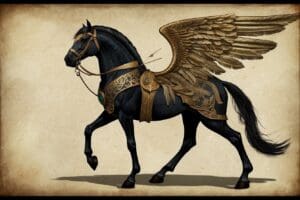



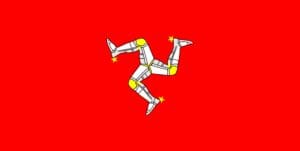
Very very well written and that is coming from the island landowner of where she was allegedly killed by her nephew.
Thank you for the kind feedback.
So glad you enjoyed our blog on Queen Maeve 🙂